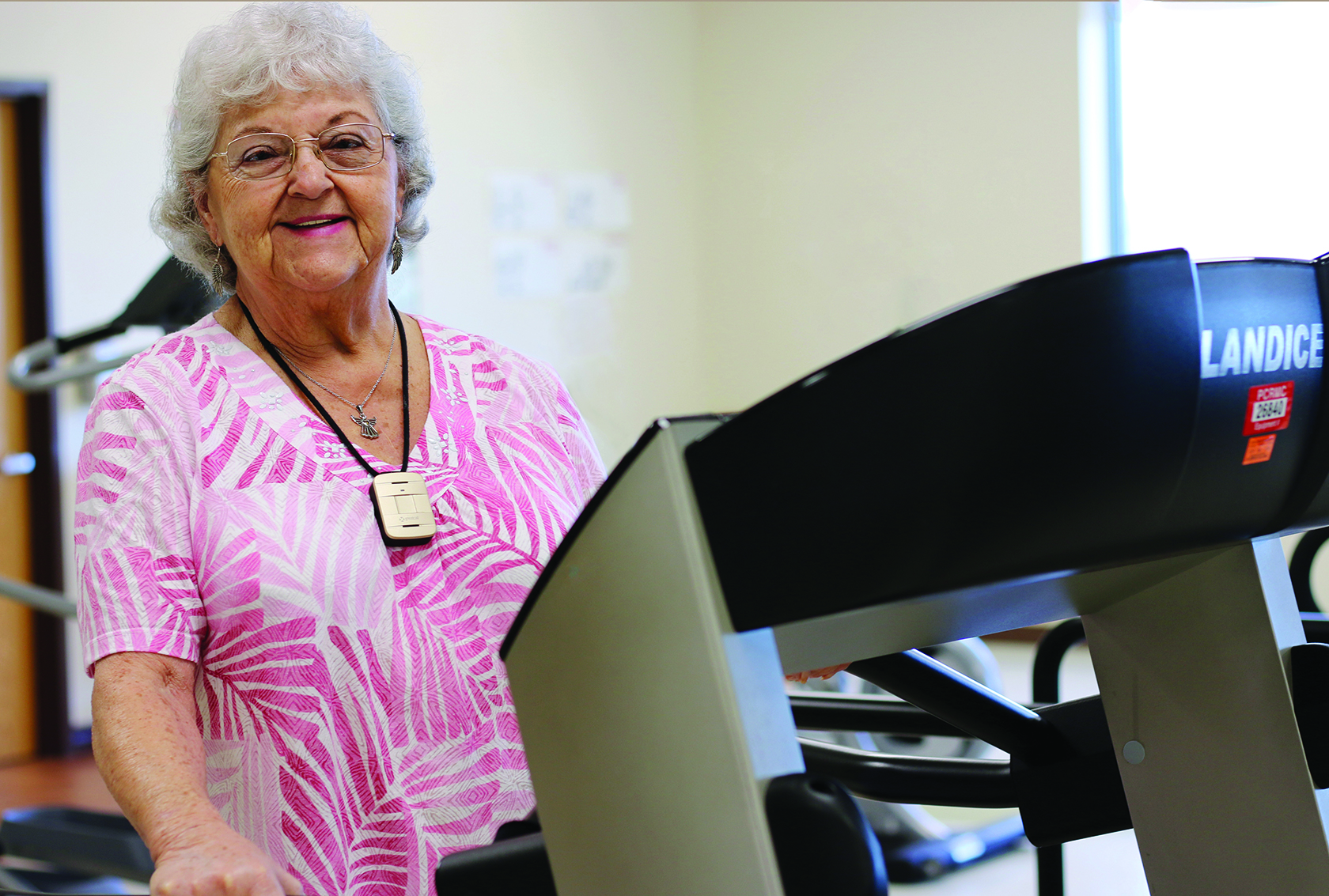What Is Cardiac and Pulmonary Rehabilitation?
Cardiac and Pulmonary Rehabilitation (or Cardiopulmonary Rehabilitation) is a supervised exercise program that involves education, nutritional counseling, stress management, smoking cessation and other lifestyle changes designed to prevent or reverse the progression of cardiac and pulmonary diseases. Phelps Health’s Cardiac and Pulmonary Rehabilitation team consists of highly trained and skilled professionals who work for you.
Goals of Cardiac and Pulmonary Rehabilitation include establishing an individualized plan to recondition your heart and lungs, to help you regain strength, prevent your condition from worsening, reduce your risk of future heart or lung problems and improve your functional capacity, health and quality of life.
Most private insurance companies provide coverage for these Medicare-approved diagnoses and others, such as heart failure. However, this varies from carrier to carrier. Phelps Health completes verification of patients’ coverage prior to them starting the program.
Who Qualifies for Cardiac Rehabilitation?
Patients with the following cardiac conditions diagnosed within the last 12 months qualify:
- Cardiac stent or angioplasty
- Congestive heart failure (CHF)
- Coronary artery bypass graft (CABG)
- Heart attack
- Heart valve replacement
- Post heart transplant
- Stable angina-pectoris
What Are the Benefits of Cardiac Rehabilitation?
- Better ability to exercise longer
- Decreased blood pressure
- Decreased severity of chest pain and decreased need for medicines to control chest pain
- Faster recovery after bypass surgery
- Improved cholesterol and triglyceride levels
- Improved health-related quality of life
- Lower chance of having another cardiac event
- Lower risk of a fatal heart attack
- Reduced emotional stress, depression and anxiety
- Reduced need for hospital stays and emergency department visits for heart problems
- Reduced shortness of breath and fatigue in people with heart failure
- Significant weight loss when exercise is combined with other changes in lifestyle, such as eating a balanced diet
Who Qualifies for Pulmonary Rehabilitation?
Any person with a chronic lung disease might benefit from pulmonary rehabilitation. Examples of lung conditions include:
- Obstructive Diseases
- Chronic obstructive pulmonary disease (COPD)
- Persistent asthma
- Bronchiectasis
- Cystic fibrosis
- Bronchiolitis obliterans
- Restrictive Diseases
- Interstitial fibrosis
- Occupational or environmental lung disease
- Sarcoidosis
- Kyphoscoliosis
- Ankylosing spondylitis
Other conditions may include pulmonary hypertension and post lung transplant.
What Are the Benefits of Pulmonary Rehabilitation?
- Fewer symptoms, like being short of breath, coughing and wheezing
- Improved ability to exercise
- Improved health-related quality of life
- Reduced risks of future lung problems and related hospital admissions
Cardiac and Pulmonary Rehabilitation Phases:
Phase I
Phase I starts while patients are in the hospital. Healthcare team members will give patients information on cardiac rehabilitation and ask questions about their health.
Phase II
Phase II is the initial outpatient phase of the program. Patients exercise in the Cardiac Rehabilitation Department while a skilled medical team supervises their response to exercise. All patients in Phase II are monitored with telemetry for the duration of their individual program. Phase II is typically a 12-week program consisting of 36 sessions. Most sessions are 30-60 minutes, three days a week.
Phase III
Phase III begins upon completion of Phase II or when deemed medically appropriate. Patients may continue in the supervised Cardiac Rehabilitation program with less monitoring, or a home exercise program can be designed for them.
